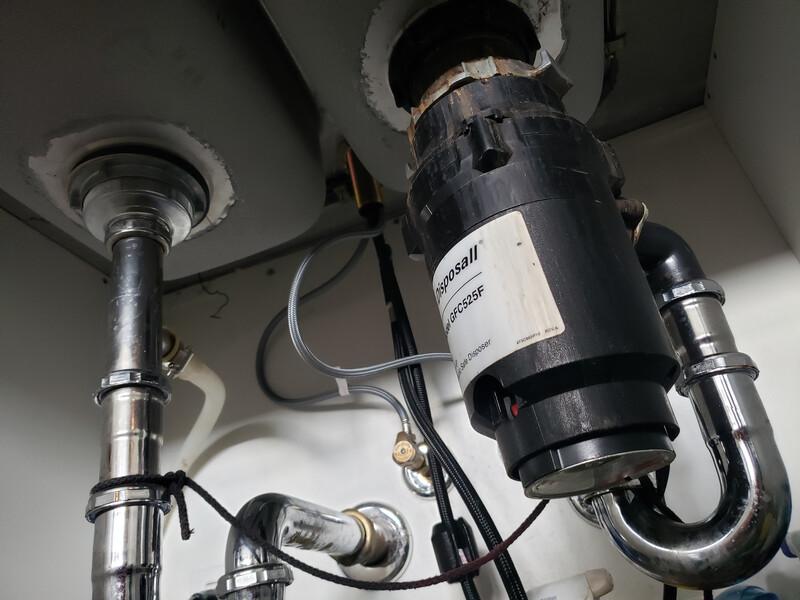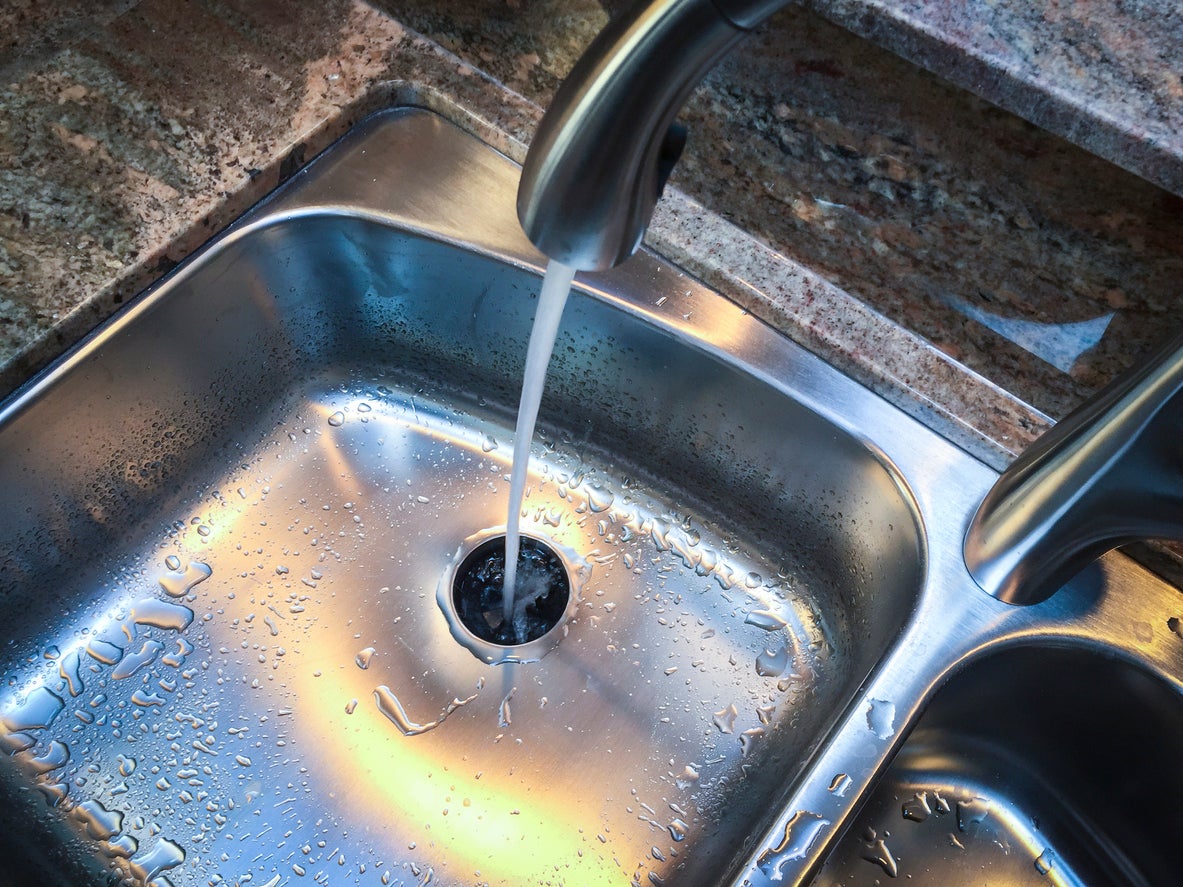Recommended Tips for Fixing a Leaking Waste Disposal Unit
Recommended Tips for Fixing a Leaking Waste Disposal Unit
Blog Article
Do you find yourself hunting for resources Garbage Disposal Leaking From Bottom?

Garbage disposals are vital cooking area home appliances that help in taking care of food waste successfully. Nonetheless, a dripping waste disposal unit can be an irritating and untidy issue to handle. Luckily, many leaks can be taken care of conveniently with a few straightforward actions. In this short article, we will certainly talk about how to repair a leaking waste disposal unit efficiently.
Intro
Garbage disposals are set up under cooking area sinks and are made to shred food waste right into smaller sized pieces, permitting it to pass through the plumbing system conveniently. While these tools are generally trustworthy, leaks can occur gradually because of wear and tear, loosened links, or damages to the system.
Common Reasons For Leaks in Waste Disposals
Worn Seals and Gaskets
Seals and gaskets play an essential function in protecting against water from leaking out of the garbage disposal. In time, these elements can weaken, resulting in leaks around the disposal device.
Loose Links
The connections in between the waste disposal unit and the pipes system can come to be loosened gradually, triggering water to leakage out throughout operation.
Cracks or Openings in the Disposal Unit
Physical damages to the garbage disposal, such as cracks or openings in the housing, can also cause leaks.
Determining the Source of the Leak
Before trying to repair a leaking garbage disposal, it is essential to identify the source of the leakage. This can normally be done with visual inspection or by performing easy tests.
Visual Examination
Check the garbage disposal device thoroughly for any kind of indications of water leak. Pay very close attention to areas around seals, gaskets, and link points.
Checking for Leaks
One method to examine for leaks is by running water through the disposal device and checking for any type of noticeable indications of leak.
Tools and Materials Needed for Fixing a Dripping Waste Disposal Unit
Before beginning the repair service procedure, collect the needed tools and materials, including a screwdriver, adjustable wrench, plumbing technician's putty, substitute seals or gaskets, and epoxy or patching product for fixing cracks or openings.
Step-by-Step Guide to Fixing a Dripping Waste Disposal Unit
Shut off the Power
Before trying any repair services, ensure that the power to the garbage disposal device is switched off to prevent the danger of electric shock.
Locate the Leakage
Identify the exact location of the leakage and figure out the cause.
Tighten up Connections
Use a wrench to tighten any loosened connections between the disposal unit and the pipes system.
Replace Seals or Gaskets
If the leak is due to worn seals or gaskets, get rid of the old components and replace them with brand-new ones.
Patching Cracks or Openings
For fractures or holes in the disposal device, usage epoxy or an appropriate patching product to secure the broken area.
Examining the Garbage Disposal After Fixing
As soon as the repair service is complete, test the garbage disposal by running water with it to make sure that the leak has actually been settled.
Preventive Maintenance Tips to Stay Clear Of Future Leakages
To stop future leakages, it is necessary to carry out normal maintenance on your garbage disposal. This consists of keeping it tidy, preventing putting non-food things or hard items down the disposal, and periodically checking for leakages or other concerns.
Conclusion
In conclusion, dealing with a dripping garbage disposal is a reasonably simple procedure that can be completed with standard devices and materials. By following the steps detailed in this post and practicing preventive maintenance, you can keep your waste disposal unit in good working condition and avoid pricey repair services in the future.
What to Do About a Leaking Garbage Disposal
A leaking garbage disposal often goes unnoticed until you confront a sopping cabinet, a foul-smelling puddle, or an audible drip-drip-drip from the unit. The fix can be frustrating, too, because the leak can stem from a number of components in the system. Fortunately, with a little sleuthing, you can zero in on the leak and—depending on the exact location—stop the icky oozing and repair the component that caused it. Worst case scenario, if it turns out that the garbage disposal must be replaced, installing a new one is a reasonable do-it-yourself task for those with basic plumbing skills. Read on to keep the cash you’d otherwise hand over to a pro.
Prepare to find the leak
Prior to testing the garbage disposal for leaks, unplug it at the wall outlet and turn off the power from the breaker box to prevent electrical shock. Then insert a watertight sink stopper into your sink drain and wipe the unit dry with a clean cloth. In any handy container, mix a few drops of food coloring into a few cups of water, and pour the dyed water onto the sink stopper to help you locate the leak.
Investigate the source
the top, where the disposal meets the sink drain the side, where the dishwasher hose or main drain pipe connects to the disposal or the bottom of the unit Inspect each of these locations while gliding a light-colored rag over the unit; the dyed water will readily show on the rag and reveal the location of the leak. If a leak isn’t immediately apparent, remove the sink stopper and pour a few more cups of dyed water down the sink drain, then check for leaks again. Leaks near the top of the unit are more likely to show themselves while the sink is plugged, while side and bottom leaks are more noticeable while the sink is unplugged.
The metal sink flange that sits directly inside the sink drain is typically sealed around the top with plumber’s putty (a clay-like sealant) and then secured from under the sink with bolts. If the plumber’s putty deteriorates, or the bolts loosen, the flange can no longer form a watertight seal between the sink drain and the disposal—which could cause a leak at the top of the unit.
To reseal the leaky flange, you must first detach the garbage disposal. Start by loosening the screws securing the main drain pipe to the disposal, then loosen the screws in the metal clamp securing the dishwasher hose to the disposal and detach the drain pipe and dishwasher hose from the disposal. Loosen the screws in the mounting ring that connects the disposal to the metal mounting assembly beneath the sink, then pull down the disposal and carefully set it on a clean, dry surface. Loosen the bolts in the mounting assembly with a wrench, then pull down the mounting assembly and set it near the disposal.

I was brought to that editorial about The Handy Guide To Fixing Your Garbage Disposal Leaking from an acquaintance on another blog. I beg you set aside a second to share this blog post if you enjoyed reading it. Thank you for taking the time to read it.
Hire A Pro Report this page